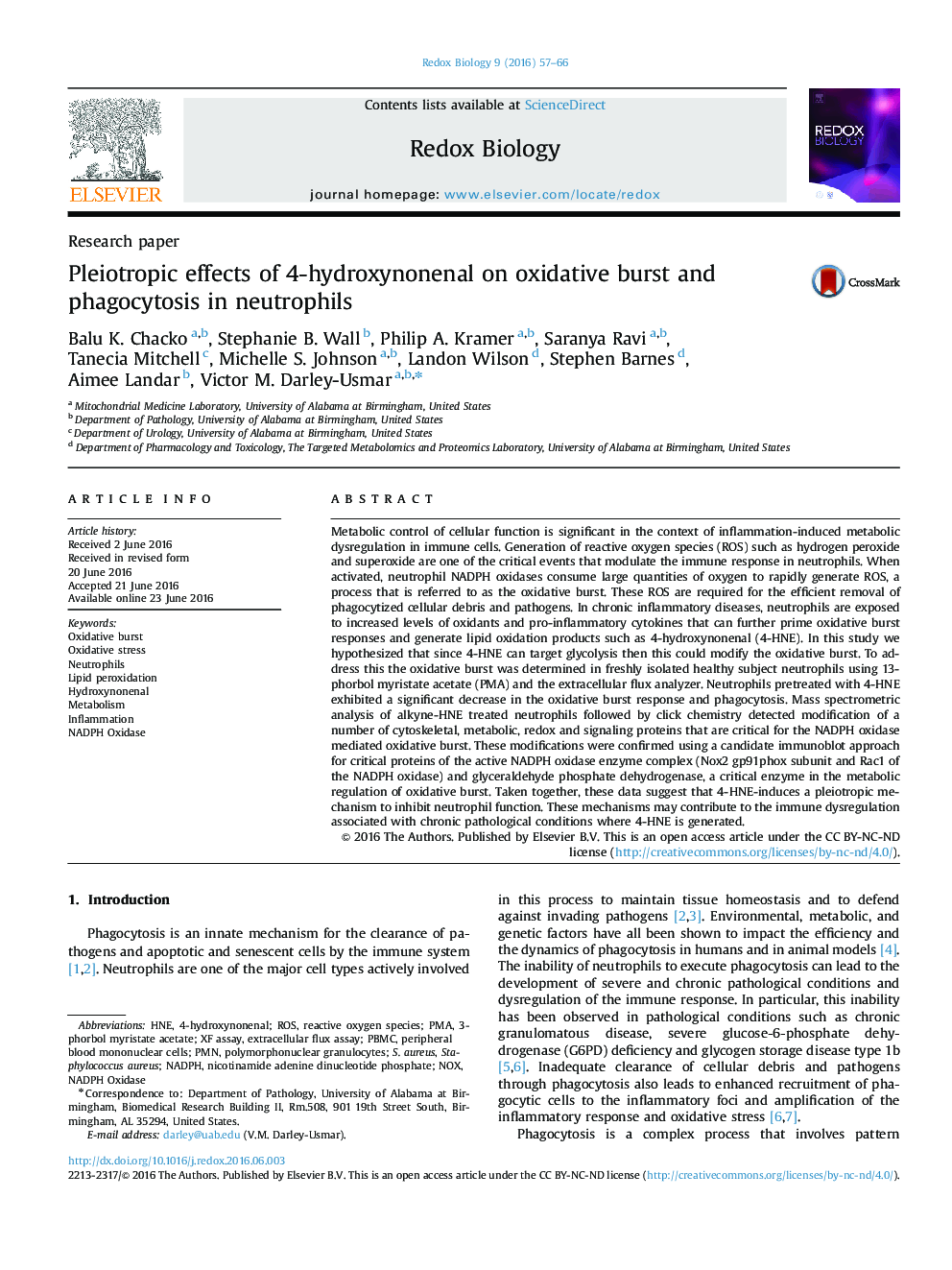| Article ID | Journal | Published Year | Pages | File Type |
|---|---|---|---|---|
| 1922808 | Redox Biology | 2016 | 10 Pages |
•Phagocytosis and glycolysis are inhibited in neutrophils by 4-hydroxynonenal.•Click chemistry with alkyne-HNE identifies over 100 potential protein targets.•Rac1, NOX2 and GAPDH are modified by 4-HNE.•The 4-HNE-dependent inhibition of neutrophil function is mediated by a pleiotropic mechanism.
Metabolic control of cellular function is significant in the context of inflammation-induced metabolic dysregulation in immune cells. Generation of reactive oxygen species (ROS) such as hydrogen peroxide and superoxide are one of the critical events that modulate the immune response in neutrophils. When activated, neutrophil NADPH oxidases consume large quantities of oxygen to rapidly generate ROS, a process that is referred to as the oxidative burst. These ROS are required for the efficient removal of phagocytized cellular debris and pathogens. In chronic inflammatory diseases, neutrophils are exposed to increased levels of oxidants and pro-inflammatory cytokines that can further prime oxidative burst responses and generate lipid oxidation products such as 4-hydroxynonenal (4-HNE). In this study we hypothesized that since 4-HNE can target glycolysis then this could modify the oxidative burst. To address this the oxidative burst was determined in freshly isolated healthy subject neutrophils using 13-phorbol myristate acetate (PMA) and the extracellular flux analyzer. Neutrophils pretreated with 4-HNE exhibited a significant decrease in the oxidative burst response and phagocytosis. Mass spectrometric analysis of alkyne-HNE treated neutrophils followed by click chemistry detected modification of a number of cytoskeletal, metabolic, redox and signaling proteins that are critical for the NADPH oxidase mediated oxidative burst. These modifications were confirmed using a candidate immunoblot approach for critical proteins of the active NADPH oxidase enzyme complex (Nox2 gp91phox subunit and Rac1 of the NADPH oxidase) and glyceraldehyde phosphate dehydrogenase, a critical enzyme in the metabolic regulation of oxidative burst. Taken together, these data suggest that 4-HNE-induces a pleiotropic mechanism to inhibit neutrophil function. These mechanisms may contribute to the immune dysregulation associated with chronic pathological conditions where 4-HNE is generated.
Graphical abstractFigure optionsDownload full-size imageDownload as PowerPoint slide
